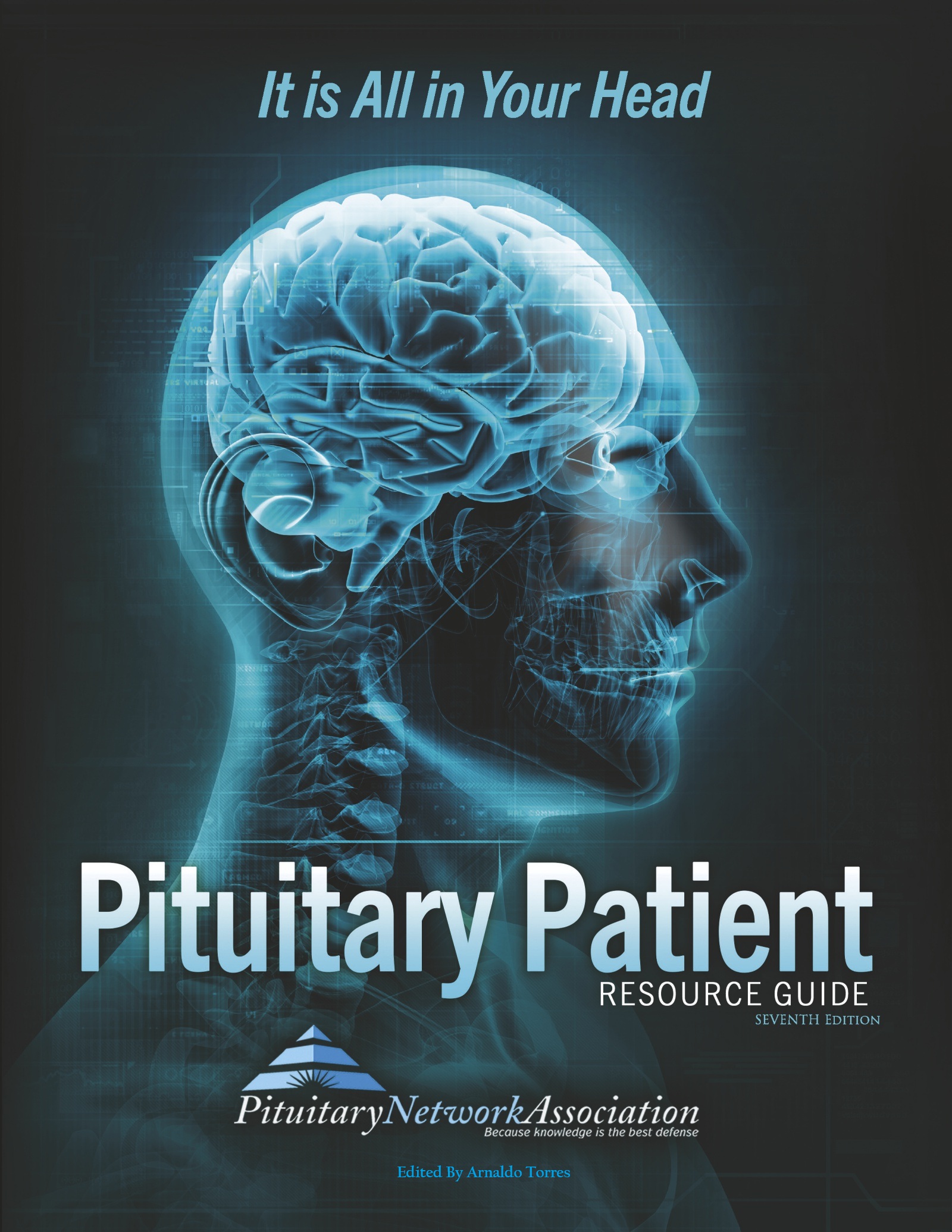Craniopharyngioma
Craniopharyngiomas are intracranial tumors that are typically both cystic and solid in structure. They occur most commonly in childhood and adolescence and in later adult life after age 50 years. They account for 2-4% of primary brain tumors. Craniopharyngiomas are usually not discovered until they press on important structures around them, and are frequently quite large (over 3 cm) when detected. They are histologically benign (not malignant) tumors, but they have a tendency to become adherent to structures in and around the pituitary gland and pituitary stalk, including the optic nerves, optic chiasm, intracranial arteries and the brain itself. They are thought to arise from remnants of the craniopharyngeal duct or Rathkes pouch which are developmental structures related to the primitive gut. Embryonic cells from an incompletely involuted craniopharyngeal duct or anterior pituitary gland may give rise to a craniopharyngioma. These tumors are closely related to another cystic masses occasionally seen in the pituitary called Rathkes cleft cyst.
Symptoms
The symptoms produced by a craniopharyngioma vary depending upon the tumors location. If it compresses the pituitary stalk or involves the area of the pituitary gland itself, the tumor can cause partial or complete pituitary hormone deficiency. This frequently results in one or more of the following: growth failure, delayed puberty, loss of normal menstrual function or sexual desire, increased sensitivity to cold, fatigue, constipation, dry skin, nausea, low blood pressure, and depression.
Pituitary stalk compression can also cause diabetes insipidus and may increase prolactin levels causing a milky discharge from the breast (galactorrhea). If the craniopharyngioma involves the optic tracts, chiasm, or nerves, then visual disturbances can result. Involvement of the hypothalamus, an area at the base of the brain, may result in obesity, increased drowsiness, temperature regulation abnormalities, and diabetes insipidus (DI). Other common symptoms include personality changes, headache, confusion, and vomiting.
Diagnosis
The best means of visualizing a craniopharyngioma is with a MRI or CT scan of the pituitary region performed without and with contrast.
Treatment
The initial treatment for a craniopharyngioma is usually surgery. The goal of surgery is to completely remove the tumor while improving or at least preserving pituitary, visual and brain function. Depending upon the location of the tumor, several approaches may be utilized. If the tumor is predominantly above the pituitary fossa (suprasellar), a craniotomy is generally required for optimal exposure and tumor removal. In a minority of patients, the tumor is relatively small (less than 3 cm) and located primarily in the area of the pituitary gland (intrasellar). In such patients, a transsphenoidal route can be used. When the tumor cannot be completely removed, radiation treatment generally offers some degree of tumor control and prolonged survival. Both conventional (external beam) and stereotactic radiosurgery are effective in controlling growth of craniopharyngiomas, but stereotactic radiation delivers a higher radiation dose to the tumor more safely. Consequently it is the preferred radiation technique. Because hormone deficiencies can develop due to the tumor mass effect or many years after radiation treatment, all individuals treated with radiation should have periodic evaluations by an endocrinologist throughout their lifetimes. Additionally, because of the tendency for craniopharyngiomas to recur, repeat MRIs or CT scans should be obtained at least once a year for the first several years after surgery or radiation therapy.






